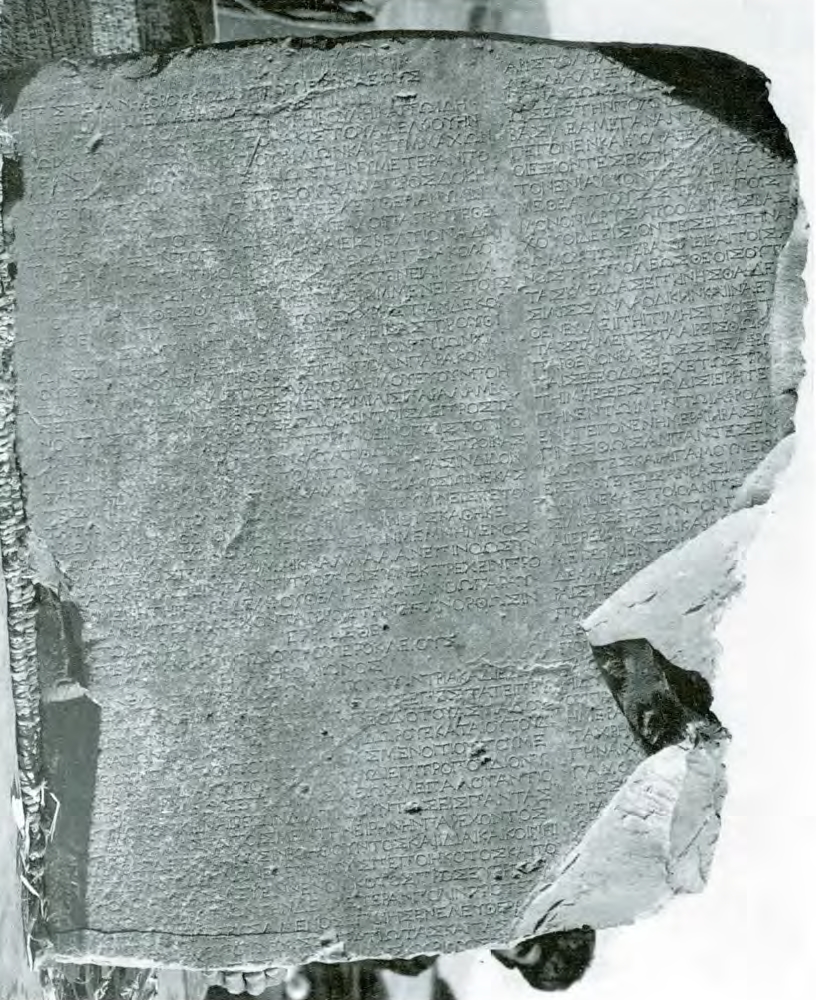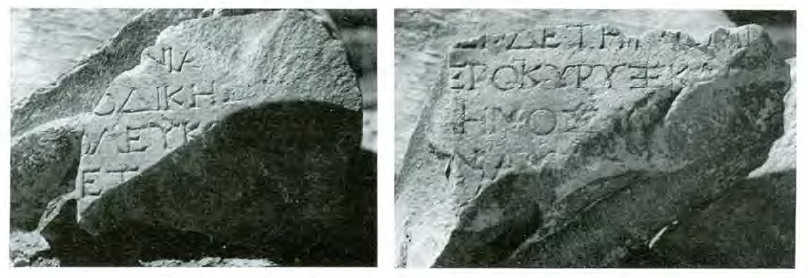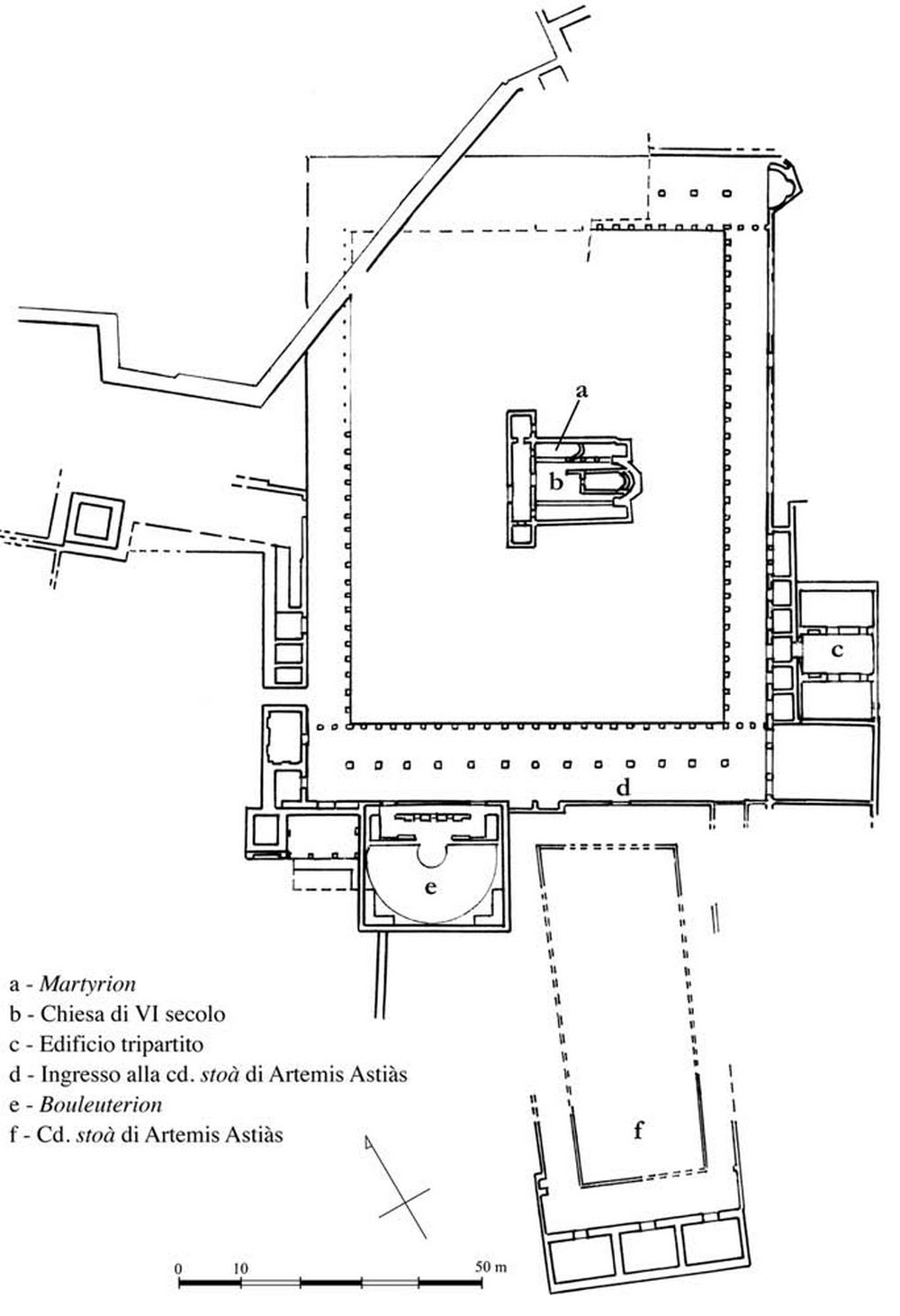We publish here only the decree of the Iasians, with independent numbering for column I (lines 1-18 = IK Iasos I 4, lines 33-50) and for column II (lines 1-44 = IK Iasos I 4, lines ).
Text constituted from: Nafissi 2001, p. 101-146 (new autopsy of the stone), with adaptations (see Apparatus).
Other editions: Pugliese-Carratelli 1967-1968, p. 445-448, no. 2, Col. I, lines 33-50 and Col. II, lines 1-44, plus the fragments 2bis,a+b;
J. and L. Robert, Bull. Ép. 1971, no. 621 convincingly located fragment 2bis,a into Col. II, lines 18-19.
Fragment 2bis,b is unlocated but must belong to the very fragmentary final section of Col. II.
J. and L. Robert also tried to interpret OGIS 237, another Iasian text mentioning honours for Antiochos III and Laodike, into the decree.
Their proposal was accepted by Blümel, who integrated the text in IK Iasos I 4, Col. II, lines 51-62, but has been rightfully rejected by Crowther 1989 (based on the lack of space on the stone and on the different writing): for this text see now Ma 2002, p. 336-337, no. 28.
The part of the decree published at the end of Col. I of the stele (Pugliese-Carratelli lines 33-50) has been improved by Garlan 1974 on the basis of a new autopsy.
Her readings have also been accepted by Blümel and by later editors.
For other proposals of integration of the fragmentary Col. II, see also Sokolowski 1972, p. 173 (Pugliese-Carratelli, lines 3-20), with the remarks by L. Robert, Bull. Ép. 1973, no. 438; Mastrocinque 1983, p. 57; Gauthier - Rougemont, Bull. Ép. 1987, no. 18.
Various integrations proposed by Piejko are summarized in SEG XLI 928. Ma 2002, p. 331-332, no. 26 B combines the editions of Nafissi and Blümel, but the layout of his text as regards the lacunae at the end of Col. I is misleading; Blümel is to be preferred with regard to this detail.
See also: Bringmann - von Steuben 1995, p. 366-371, no. 297 [E]; Kotsidu 2000, p. 400-401, no. 283 [E]; Ma 2002, p. 331-333, no. 26 B; Fabiani 2015, p. 137-140 (paleography), 209, 218 (prosopography), 267-268 (date and affinity with 'Group 8' of the honorific decrees from Iasos), 282-283
(role of the prostatai in the distribution of the revenue from the sale of Laodike's wheat and the constitution of dowries). On the letter of Laodike that opens the dossier ( IK Iasos I 4, Col. I, lines 1-32), see the discussion in Mastrocinque 1995 and Nafissi 2001.
The ideological implications of Laodike's initiative with regard to female euergetism and ruler cults are discussed in Pomeroy 1982, Bielman 2002, p. 161-165, Ma 2002, p. 223-224, Caneva 2012, p. 91-92, Caneva 2014a, p. 45-46.
Other studies focus more precisely on the information that Laodike's letter sheds on royal administration (Capdetrey 2007, p. 312-314), the civic exploitation of the endowment and its economic value (Vérilhac - Vial 1998, p. 165-166).
Images: Pugliese-Carratelli 1967-1968, figs 5-6; Fabiani 2015, fig. 10.
Further bibliography: on the topography of Iasos, see Baldoni et al. 2004, esp. p. 90.93 for the area south of the agora where the stele was reused; Berti 2011 on the agora.
On the internal and external political background the decree, see Crowther 1989; Nafissi 2001, p. 121-123; Fabiani 2015, p. 289-291.
Online record: PHI [IK Iasos I 4, lines 33-110]








